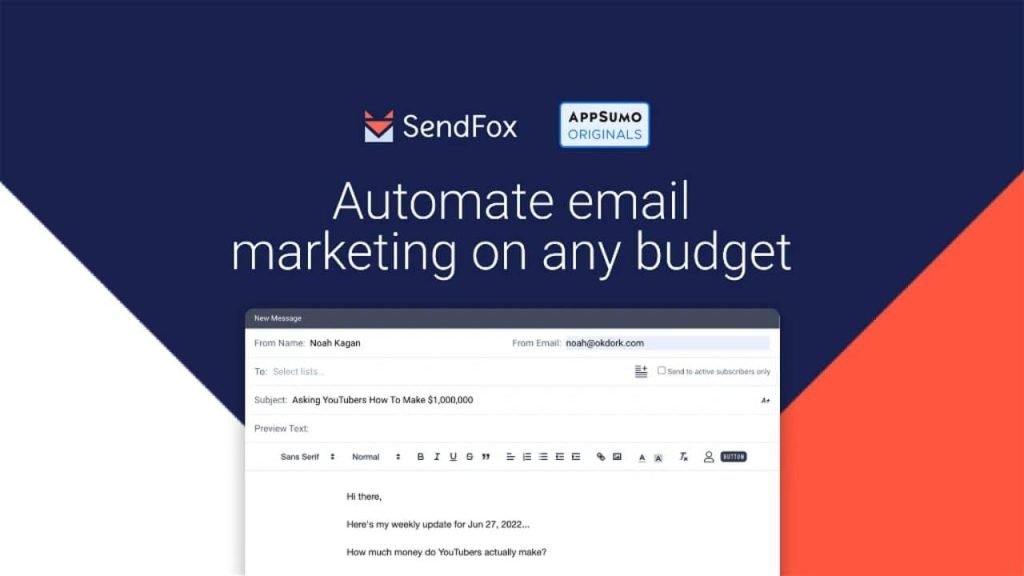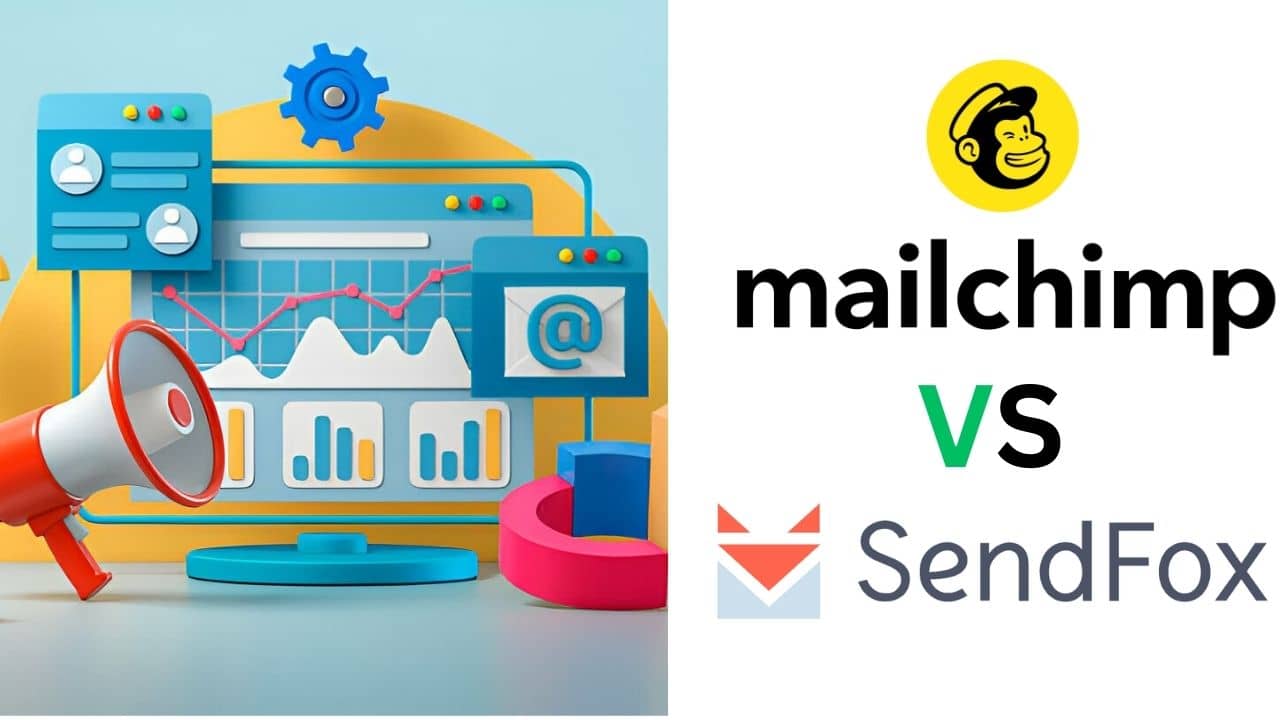Mailchimp vs. Sendfox
In the vast and varied landscape of email marketing platforms, two names have carved out significant niches for themselves. Mailchimp, perhaps the more recognizable of the two, has long been a go-to for businesses of all sizes, offering a comprehensive suite of marketing tools. Sendfox, on the other hand, represents a newcomer to the scene, promising simplicity and a focus on content creators and small enterprises. This in-depth comparison sets out to help you discern which of these platforms is the right fit for your business.
Table of Contents
Understanding the Basics
Before we deep dive into the comparison, here’s a brief overview of the contenders.
Mailchimp started in 2001 and has since grown to become one of the most well-known email marketing services globally. Offering everything from marketing automation to transactional emails, Mailchimp prides itself on catering to businesses at every stage, with a strong emphasis on e-commerce integration and analytics.
Sendfox is the brainchild of AppSumo, a company known for its focus on entrepreneurs and small business owners. Launched in 2019, Sendfox positions itself as the modern solution for creators and entrepreneurs, aiming for a balance of powerful features with a user-friendly platform.
Both platforms emphasize the importance of email marketing in staying connected with audiences and driving business growth. But how do they stack up against each other in practice?
Sendfox Lifetime Deal
Feature Comparison
A pivotal factor when choosing an email marketing platform is its feature set. Below, we compare Mailchimp and Sendfox in key areas:
Pricing: To run a successful email marketing campaign, cost is a significant deciding factor. Both platforms offer various plans, but which one gives you the best bang for your buck?
Automation: Email automation is critical for maintaining engagement without overwhelming subscribers. Which platform makes setting up automated campaigns a breeze?
Templates: The first impression of your emails can determine the success of your campaign. How do Mailchimp and Sendfox differ in the design and variety of their templates?
Deliverability: Your emails need to land in your subscribers’ inboxes, not their spam folders. Which platform has the better deliverability rate and what does this mean for your outreach?
Analytics: Understanding the success of your campaigns is pivotal to refining your strategy. Which platform provides more insightful analytics tools?
User Experience and Interface: Finally, a good user experience can make or break your productivity. Which platform offers a more intuitive and enjoyable interface?
Target Audience and Use Cases
Mailchimp and Sendfox may serve different demographics better; finding the right fit for your business model is crucial. We explore what businesses or creatives would most benefit from using each platform and why.
Pricing Analysis
Understanding the true cost of an email marketing platform involves more than just comparing monthly fees. Each platform has its pricing quirks, and it’s important to consider which one aligns best with your business’s financial and growth strategy.
Pros and Cons
No platform is perfect, and each one will have its unique set of pros and cons. What are the main advantages of Mailchimp and Sendfox, and where do they fall short?
Sendfox Pros

Thanks to several distinct advantages, Sendfox emerges as a strong contender in the email marketing platform arena, particularly for content creators and small businesses. Firstly, its affordability is hard to beat, with pricing plans designed to cater to the financial realities of startups and individual entrepreneurs. Sendfox also simplifies the email marketing process, offering an intuitive interface that strips away unnecessary complexity, making it accessible for users of all skill levels.
A standout feature is its focus on content creators, with tools specifically tailored to promote blogs, podcasts, and videos, enhancing engagement and subscriber growth. Additionally, Sendfox integrates seamlessly with other tools popular among its target audience, such as Sumo.com and KingSumo, providing a cohesive toolkit for digital marketing. Lastly, the platform benefits from the reputation and support infrastructure of its parent company, AppSumo, known for its commitment to quality and customer service.
Sendfox Cons
Despite its strong points, Sendfox is not without its drawbacks. One significant limitation is its relatively basic feature set compared to more established platforms like Mailchimp. Users seeking advanced automation, segmentation capabilities, or extensive e-commerce functionalities might find Sendfox lacking.
Additionally, while its template selection is growing, it currently does not match the diversity and sophistication of more mature competitors. Sendfox’s analytics tools, crucial for measuring campaign effectiveness, also tend toward the simpler side, potentially hindering in-depth performance analysis. Another point of contention is its customer support; while generally reliable, it may not be as responsive or comprehensive as larger platforms provide. Lastly, despite its focus on affordability, the free plan has notable restrictions, which might prompt a need for an earlier upgrade to paid plans than anticipated.
Mailchimp Pros

Mailchimp shines as a leading figure in the email marketing sphere, primarily due to its robust feature set designed to accommodate businesses of various sizes and industries. One of its most significant advantages lies in its expansive array of advanced automation and segmentation options, allowing marketers to craft highly personalized and efficient campaigns. The platform offers a vast selection of professionally designed email templates, catering to an array of aesthetics and purposes, thereby enabling brands to maintain a high level of professionalism and creativity in their communications.
Furthermore, Mailchimp’s analytics capabilities are notably sophisticated, providing deep insights into campaign performance, subscriber behavior, and ROI, which are indispensable for refining marketing strategies. Another noteworthy pro is its seamless integration with a wide range of e-commerce platforms and other business tools, enhancing its utility as a comprehensive marketing solution. Additionally, Mailchimp’s commitment to deliverability ensures emails reach the intended inboxes, maximizing engagement and conversion rates. Lastly, despite its extensive features, Mailchimp maintains a user-friendly interface, making it accessible to marketers of all skill levels, and its customer support is renowned for being responsive and helpful, adding another layer of value to its service.
Mailchimp Cons
However, Mailchimp’s comprehensive offering comes with its own set of cons, particularly for small businesses or those just starting. The primary concern for many is cost – as your subscriber list and feature needs grow, Mailchimp can become significantly more expensive than some of its competitors, including Sendfox.
Additionally, while its broad range of features is a strong selling point, it can also overwhelm new users or small teams who may find the platform’s extensive options and settings complicated to navigate. Another point of critique is Mailchimp’s approach to subscriber management. Users are charged for duplicate contacts across lists, leading to potentially higher costs if not carefully managed. Also, in recent years, some users have voiced concerns over changes in Mailchimp’s terms of service and pricing structure, feeling these adjustments lack transparency and favor the platform’s interests over those of its users. Lastly, while Mailchimp offers a vast array of integrations, setting up and managing these connections can be complex and might require additional assistance or resources.
User Reviews and Feedback
Hearing from real users can be incredibly insightful. We’ve scoured the web to collect the most common likes and dislikes of both Mailchimp and Sendfox, straight from the people using these services daily.
Conclusion
After an in-depth analysis of each platform’s features, pricing, and user feedback, it’s clear that both Mailchimp and Sendfox have their strengths. However, when it comes to choosing between the two, the answer isn’t one-size-fits-all. Depending on your business’s specific needs and goals, Mailchimp may be the trusted, feature-packed workhorse, while Sendfox could emerge as the agile, upstart email marketing tool perfect for new ventures and smaller campaigns. While Mailchimp boasts a pedigree stretching back two decades, Sendfox brings a fresh simplicity that may resonate more strongly with today’s entrepreneurs and content creators. It’s ultimately your unique business operations, goals, and preferences that will determine the better fit.
Regardless of the platform, robust email marketing can be a game-changer for businesses. Both Mailchimp and Sendfox offer the potential to develop deep and meaningful connections with your audience through email—opening doors for engagement, brand loyalty, and sales. Remember, as you grow and evolve, so should your marketing platform. Stay engaged with platform updates, always be on the lookout for new integrations, and most importantly, listen to your audience. After all, the heart of email marketing lies in the conversation.




